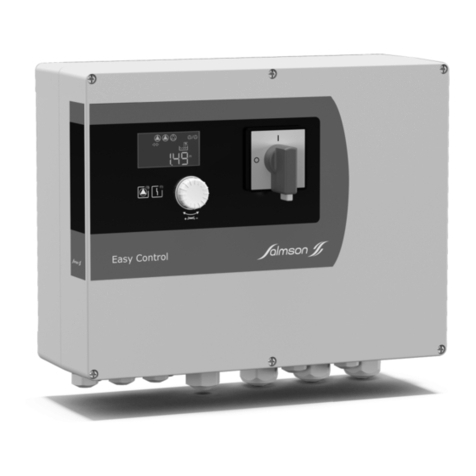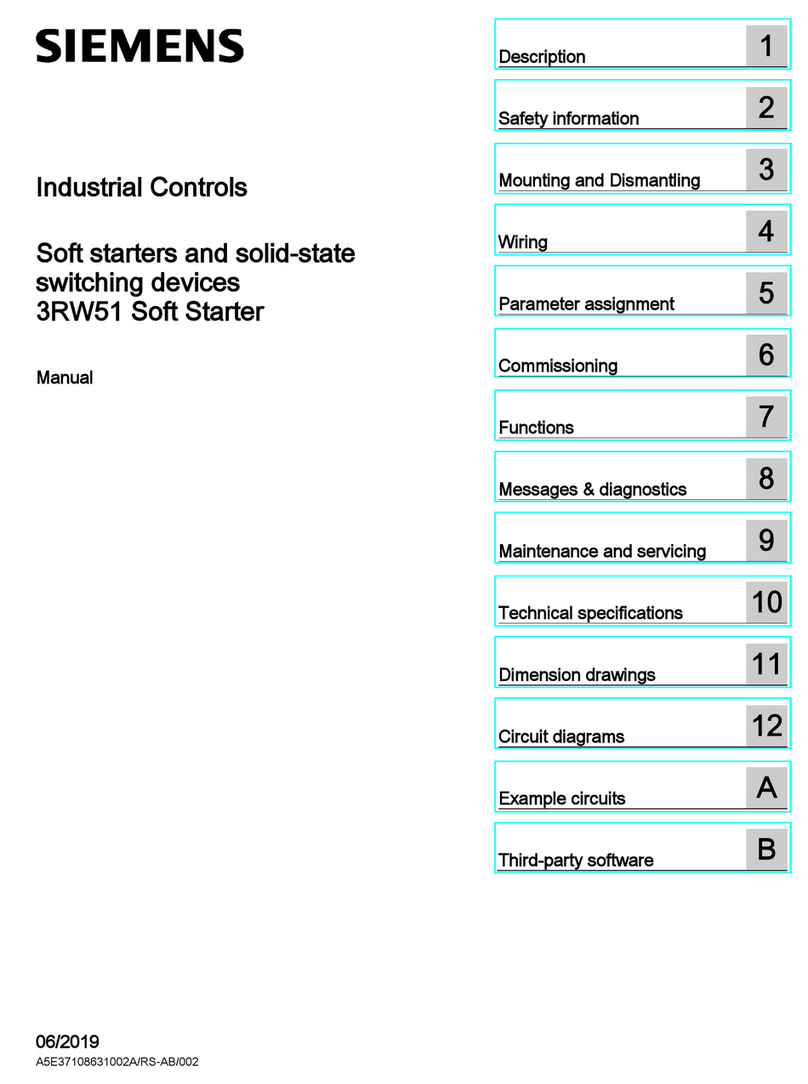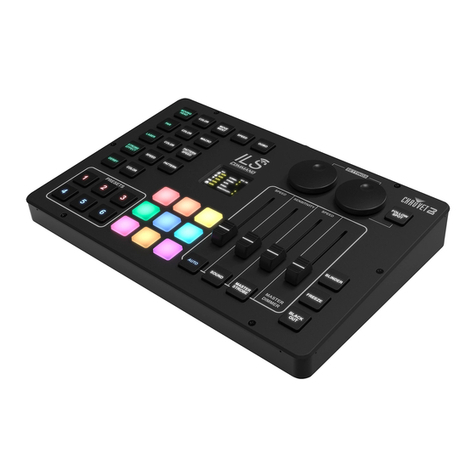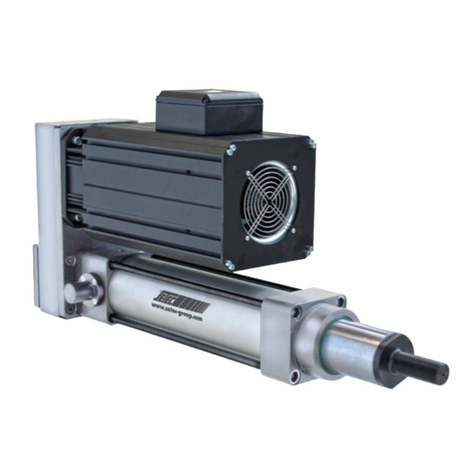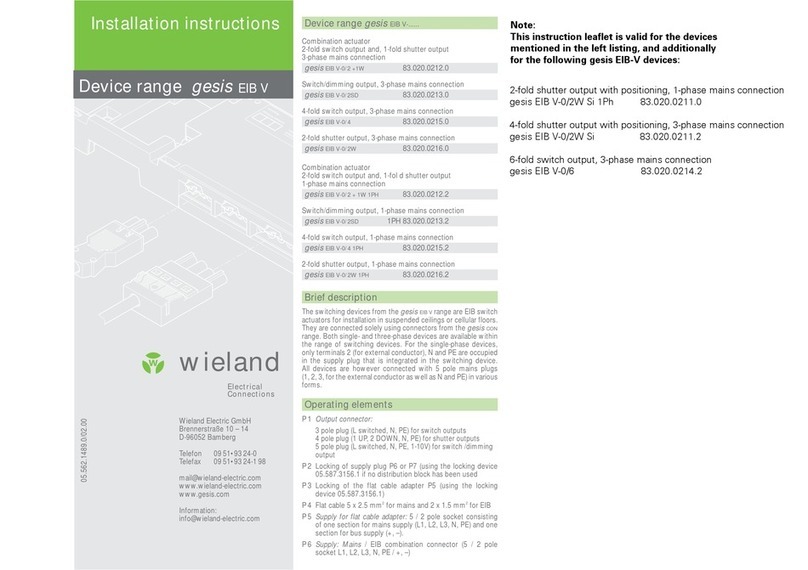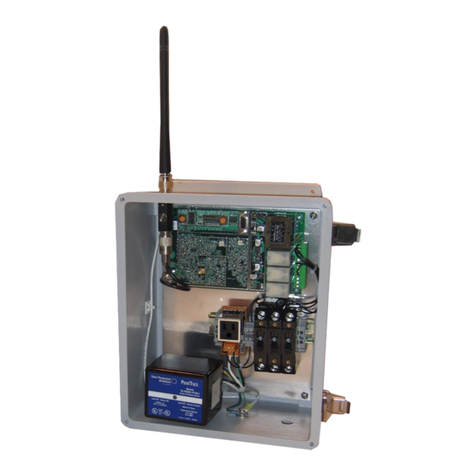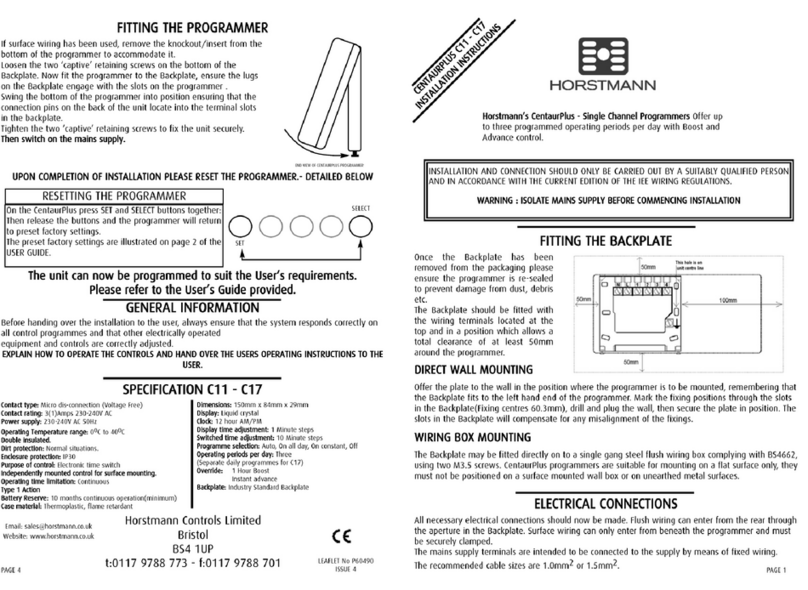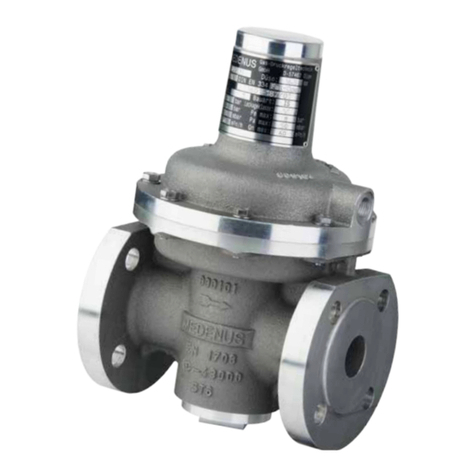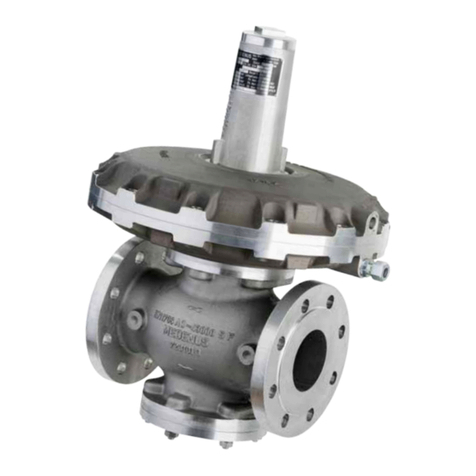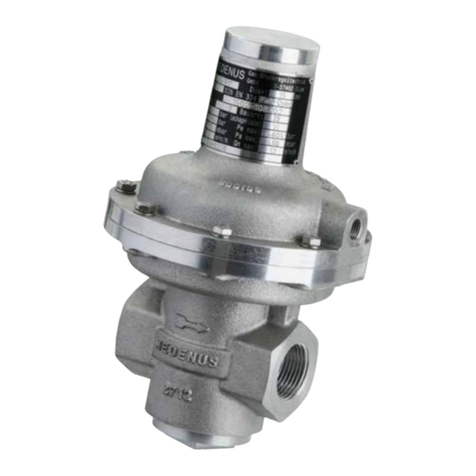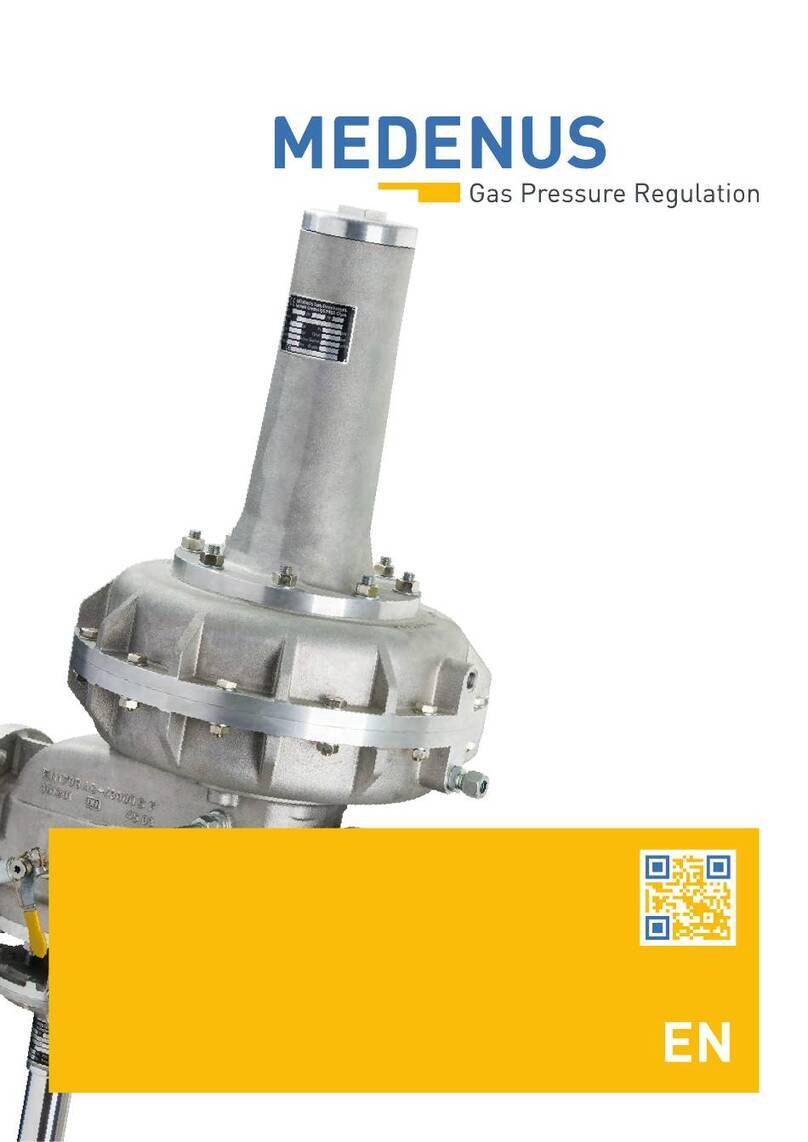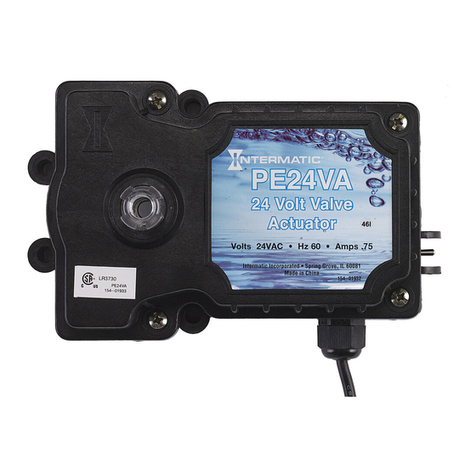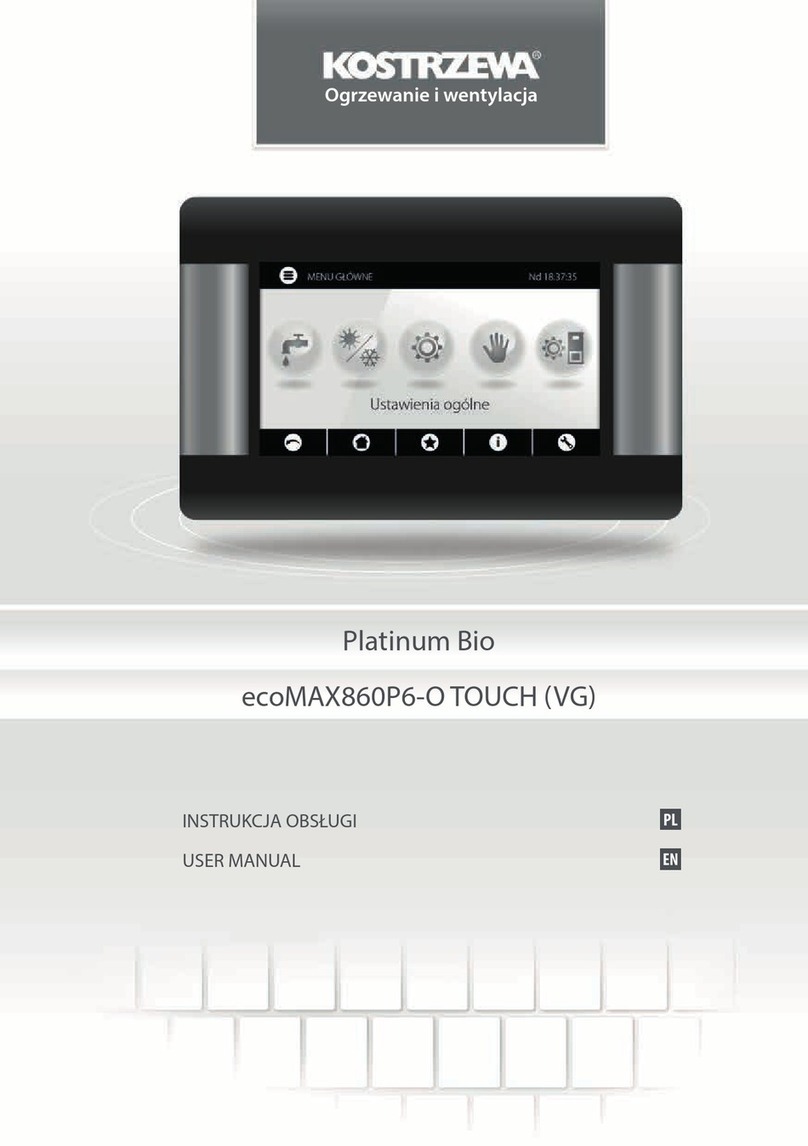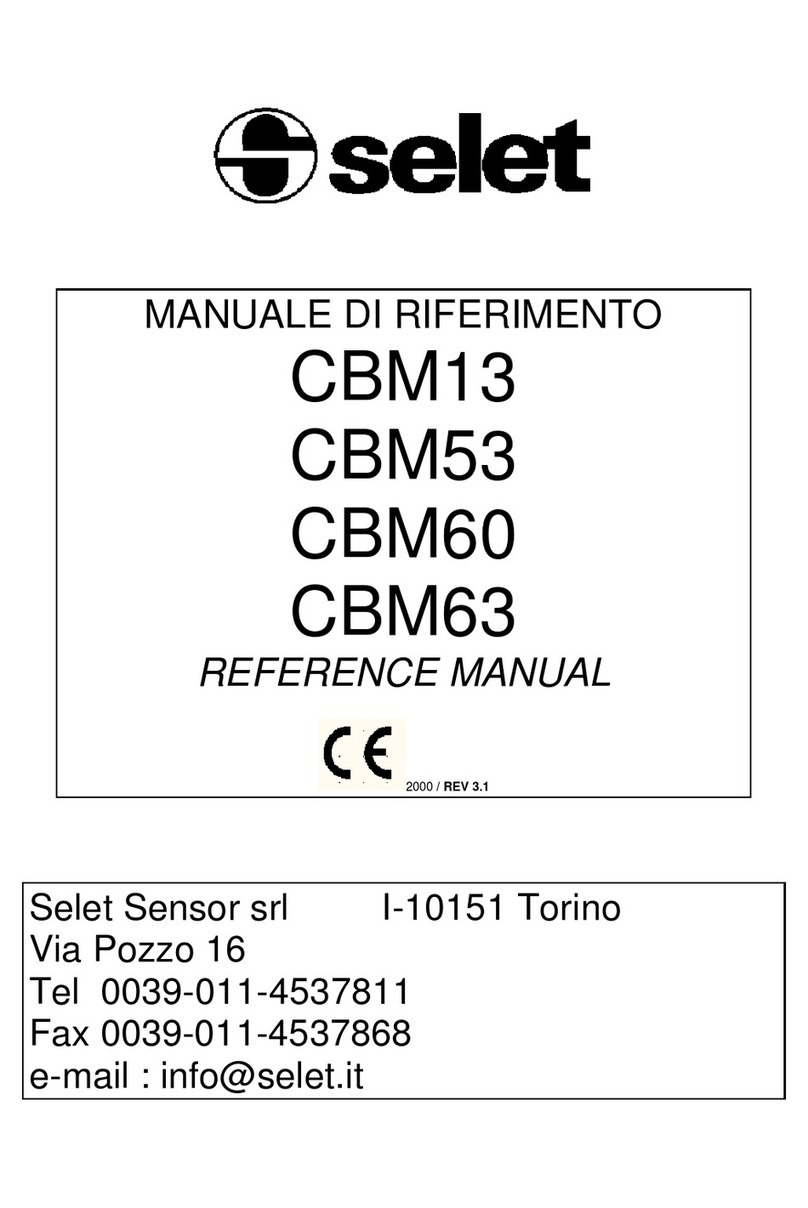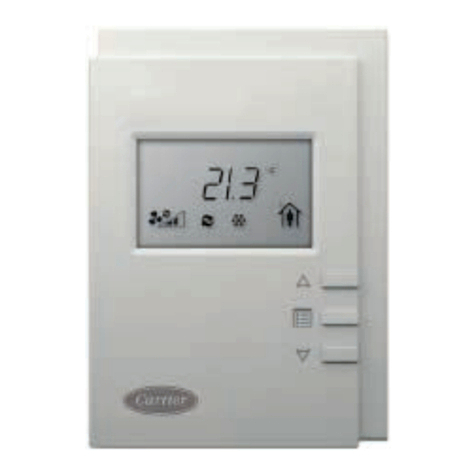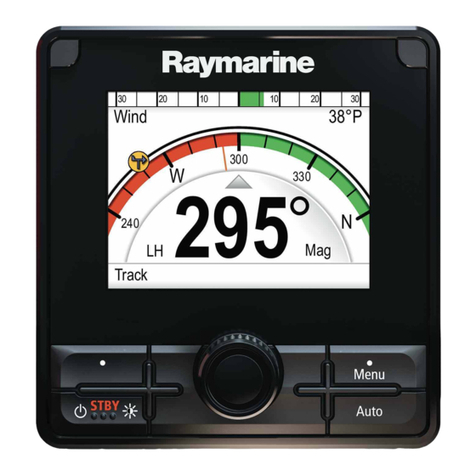
16
© 05.2022
The bypass line (item 7.31) is used to reduce the set pressure via the outlet
pressure line (p. 13, item 7.45) if necessary.
In order to open the actuator (p. 13, item 7.03) when the gas flow quantity
increases, the set pressure through the regulator (item 7.33) must be increased.
If the gas flow quantity decreases, the actuator (p. 13, item 7.03) must be closed
accordingly. For this, the regulator (item 7.33) reduces the set pressure and the
excess set pressure in the diaphragm assembly of the actuator is reduced via
the bypass line (item 7.31). The discharge velocity via the bypass line (item
7.31) can be set continuously with the help of the bypass setting device (item
7.44). The factory-set bypass setting device (item 7.44) has been opened by 4
turns, i.e. 2 mm.
To increase the discharge velocity, the bypass setting device (item 7.44) must
be opened by turning the restrictor screw (item 7.45) in counterclockwise
direction. To reduce the discharge velocity, the bypass setting device must be
closed by turning the restrictor screw in clockwise direction.
• For the functional test of the GPR, let gas or other suitable media flow via the discharge line to the outside
atmosphere and read the set regulating pressure on the outlet pressure gauge (item 7.12).
• After closing the discharge line, a constant closing pressure within the closing pressure class can be read on
the outlet pressure gauge (item 7.12).
• Slowly open the outlet shut-off device (item 7.13) (0.5 bar/s).
• Screw on the sealing cap (item 7.15) of the safety shut-off valve (SSV) again.
Changing the control range
Switching to the control range of a different setpoint spring can be done for the SSV while the device is pressurized.
Safety shut-off valve
The SSV closes if the overpressure setpoint spring (upper trigger level) is removed from a pressurized system.
Setting the gas pressure regulator:
Unscrew the protection cap (item 7.43) from the R70 and change the outlet pressure (Pd) by rotating the setpoint setting
device (item 7.40). While doing this, observe the outlet pressure displayed on the manometer (p. 13, item 7.12) of the
outlet pressure side.
Turning clockwise - pressure increase
Turning counterclockwise - pressure reduction
For a precise setting, the gas on the outlet side must freely escape. Otherwise the closing pressure is also taken into
account. If the desired outlet pressure cannot be set with the mounted spring, it may be necessary to replace the control
spring in the regulator (R70).
7.4.1 Bypass line, bypass setting device
Replacing the control spring (R70)
• Release the control spring by turning the setpoint setting device (7.40)
counterclockwise.
• Remove the sealing cover (item 7.41) from the diaphragm assembly (R70) (4x M6) and
pay attention to the O-ring in the housing.
• Insert a suitable setpoint spring (item 7.42) and close the cover.
• Set the desired outlet pressure (Pd) as specified above.
• Screw the protection cap (item 7.43) again onto the R70.
7.40
7.41
7.42
7.43
7.33
7.44
7.30
7.45
7.31




















